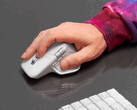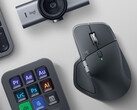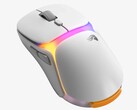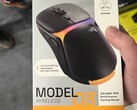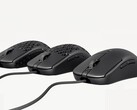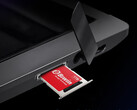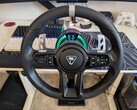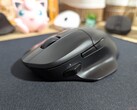We recently covered the Elecom VM800, which claimed to be the world's first wireless gaming mouse that uses UWB (ultra-wide band) instead of 2.4 GHz connectivity in order to provide a more stable, reliable connection for ultra-low latency and consistent performance. Now, however, after a handful of teasers, Waizowl, a niche Chinese peripherals manufacturer, has announced a new gaming mouse that it claims is, in fact, the true world's first UWB gaming mouse. This claim seems to hinge on the fact that the new Waizowl Cloud Ultra Nebula wireless gaming mouse will be available to order globally on September 17, with no pre-orders, waiting lists, or stock limitations.
Competitive claims aside, Waizowl's Cloud Ultra Nebula has some promising hardware and features that might make it competitive with brands like Logitech, SteelSeries, Razer, and the other lightweight gaming mice we've seen and reviewed previously. Waizowl's gaming mice are generally on the lighter side, with the brand's latest ergonomic design, the OGM V2 Pro, coming in at just 49 g, so we can expect similar or even lighter weights from the Cloud Ultra Nebula. In terms of sensor hardware, the Cloud Ultra Nebula will likely feature a tweaked version of the PixArt PAW3950, which has proven itself to be an excellent sensor for flagship performance.
No profile images have been shared of the Cloud Ultra Nebula just yet, but it looks to follow the shape of mice like the Logitech G Pro X Superlight 2 (curr. $139.99 on Amazon) and Pulsar X2 CrazyLight (curr. $129.95 on Amazon) pretty closely. Much like Pulsar's gaming mouse designs, the Cloud Ultra Nebula has a striking paint-splatter design that sets it apart from the typical plain black amorphous blob with a green snake logo on the back.
There is no word on what switches or encoder the Cloud Ultra Nebula will use either, but a previous Business Wire press release reveals that the mouse will forego Bluetooth connectivity entirely.
Pricing for the Waizowl Cloud Ultra Nebula is so far unclear, although it would be surprising to see it launch at under $100, given the $109.99 pricing of the OGM V2 Pro.
The main driving factor behind switching from 2.4 GHz to UWB is the reduction in noise and interference, and more stable polling rates are often mentioned as advantages of the new wireless tech, as well. Supposedly, the UWB connectivity will also allow multiple devices to connect via the same antenna, with all connected devices capable of 8 kHz polling rates. The Cloud Ultra Nebula will operate between 3.1 GHz and 10.6 GHz, which is a wider range of frequencies than the Elecom mouse we covered previously. Theoretically more available frequencies means that the mouse and receiver can negotiate the best possible connection, and a receiver with wider frequency support should also be able to handle more devices simultaneously than one with narrower support.
It remains to be seen whether UWB is actually necessary in gaming mice. In all of our testing of wireless gaming mice. In all of our recent tests of gaming mice, ranging from the Keychron M7 8K and M6 8K to the NZXT Lift Elite and Razer Deathadder V4 Pro, neither connection stability nor latency have been issues. Of course, this may be an issue when it comes to totally wireless setups, where interference might start to rear its ugly head, but the dongle extenders and adaptors sold with most modern gaming mice should help resolve that.







